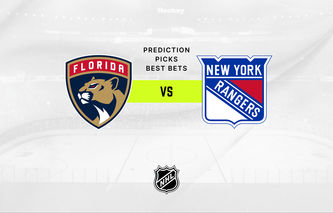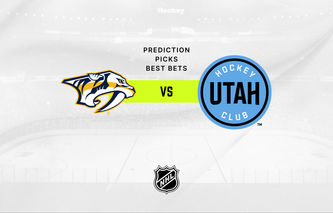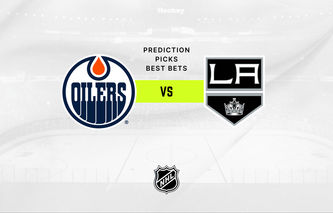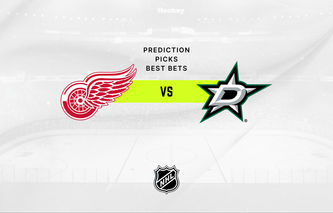Betting on Formula 1 combines skill, strategy, and straight-up excitement. It is not like betting on football or basketball.
In F1, you work with unique factors like qualifying times, car reliability, and weather conditions that can flip everything on race day.
If you are serious about betting on F1, let me make it simple and clear—without the nonsense.
We will cover the key bet types, how to place them, and strategies that work.
You are betting on more than who crosses the finish line first.
It is about knowing the drivers, teams, and even the weather. This is how to bet on F1 without overcomplicating things or throwing your money away.
How to place a bet on F1?
Let me walk you through how to bet on F1, step by step.
I will list all the practical details that anyone can follow.
Once you know the process, it is pretty straightforward.
Here is the most effective way to get it done.
1. Log in or sign up
First, get into your betting account. I use DraftKings and bet365 because they have solid F1 options.
If you don’t have an account, creating one takes about 5 minutes.
Make sure you choose a sportsbook from our list of the best F1 betting sites.
Enter your info, pick a password, and boom—you are in.
They will sometimes ask for ID, but it is no big deal.
2. Add funds
Next, you need some cash in the account.
I usually go with PayPal because it is fast, but you can use credit cards (Visa, MasterCard).
Some sites throw a bonus for depositing, so look out for that.
A $100 deposit might get you an extra $50 to bet with, which is always nice.
I stick to amounts I am comfortable losing.
3. Find the F1 section
This is where things start to get fun.
Every sportsbook organizes stuff differently, but most have F1 under “Motorsports.”
If you can’t find it, use the search bar.
Type “F1” and the list of upcoming races will pop up.
An F1 season has at least 23 races per year.
4. Pick a race and bet type
Now comes the real choice. For F1, I usually keep it simple and go for the outright winner bet—who’s taking first place?
If Verstappen is racing, he’s usually the heavy favorite, but don’t expect huge payouts unless you bet big.
My personal favorite? Betting on the podium finish. It is safer since your driver needs to hit the top 3.
Want a little more risk? Try betting on the fastest lap or who will start on pole after qualifying.
Sometimes, I throw a small bet on a long shot for fun.
5. Place the bet
Once you have picked your bet, it will go to the bet slip.
Double-check everything—odds can change quickly, especially close to race time.
I stick to $20 bets unless I am feeling confident. Enter the amount, click Place Bet, and that’s it.
Track the outcomes through the bet slip.
6. Watch the race
This is the best part. Sit back, crack open a drink, and enjoy the race.
If your pick crosses the line, the winnings drop into your account as soon as the results are official.
Withdrawing money is as easy as putting it in—PayPal, bank transfer, whatever you prefer.
Understanding F1 betting odds
When betting on F1, the odds show two things: the chance of a driver winning and the potential payout.
Knowing how these odds work equals knowing how to bet on F1.
In F1 betting, odds are shown as positive (+) or negative (-) numbers.
This is how it looks at most sportsbooks:
Negative odds (-): This indicates the favorite. If Verstappen is at -200, a $200 bet would win $100.
Positive odds (+): These represent the underdog. So if Norris has +500 odds, betting $100 on him would give you $500 in winnings.
Here is a clearer breakdown:
Driver | Odds | Winnings (on a $100 bet) |
|---|---|---|
Max Verstappen | -200 | $50 |
Lando Norris | +135 | $135 |
Charles Leclerc | +4500 | $4,500 |
Calculating winnings
To calculate how much a bet will pay out:
For negative odds (-): I take 100 divided by the odds number, then multiply that by the bet. Example: For a $200 bet on Verstappen at -200, the formula is 100 ÷ 200 = 0.5. Multiply: $200 × 0.5 = $100 profit. So, betting $200 wins $100.
For positive odds (+): Multiply the odds divided by 100 by the amount I bet. Example: If Norris has odds of +135 and I bet $100, 135 ÷ 100 = 1.35. Multiply: $100 × 1.35 = $135 profit.
Implied probability
Odds also reveal the likelihood of a driver winning:
For negative odds (-): Odds ÷ (Odds + 100) × 100. Example: Verstappen at -200. Calculation: 200 ÷ (200 + 100) = 67% chance of winning.
For positive odds (+): 100 ÷ (Odds + 100) × 100. Example: Norris at +135. Calculation: 100 ÷ (135 + 100) = 42% chance.
Types of F1 bets
There are plenty of interesting ways to learn how to bet on F1.
Whether it is wagering on who wins, or getting more specific with prop bets, understanding the types of bets can help improve strategy and fun.
Here is how I approach it, based on what has worked for me.
Outright race winner
This is your basic bet—picking who wins the race. While simple, it can be risky, especially with low odds on favorites like Verstappen.
I often skip betting on favorites when their odds are below -200. A bet on someone like Norris at +300 when he's been performing well is more rewarding.
It is riskier but offers better value.
Podium finish (top 3)
If I believe a driver will do well but am unsure if they will win, I go for a podium finish bet. Here, you are backing a driver to finish in the top three.
Hamilton, for instance, is usually a safe choice for a podium finish even if he’s not likely to win. The odds are smaller, but the risk is lower too.
Driver | Odds to Win | Odds for Podium Finish |
|---|---|---|
Max Verstappen | -200 | -500 |
Lando Norris | +300 | +150 |
Charles Leclerc | +4500 | +900 |
Fastest lap
Betting on the fastest lap is all about strategy. Some teams go for it towards the end of the race to grab an extra point.
This bet often pays out well, especially if a driver like Leclerc or Norris sets the fastest lap, even without winning the race.
Head-to-head betting
I like this one when there is a good rivalry. You pick one of two drivers to finish higher. I have bet on battles like Leclerc vs. Sainz or Hamilton vs. Russell.
It is not about winning the race but finishing ahead of the other guy.
Pole position
Betting on pole position involves wagering on the fastest qualifier. It is fun when the race outcome seems predictable, but qualifying can offer surprises.
Teams like Red Bull are strong in this department. I have seen big payouts by betting on who will clinch pole position on challenging tracks like Monaco.
Winning margin
This bet focuses on how far ahead the winner will finish.
I have often used it on races where the gap between cars is predictable.
For example, betting on 0 to 5.999 seconds for a tight race or over 11 seconds when one team dominates can pay off.
Safety car
Betting on whether the safety car will appear is all about track knowledge.
On tight street circuits like Baku or Monaco, there is usually a higher chance of accidents.
I have found it is worth betting on the safety car at these tracks, where crashes are more common.
Futures bets (championship)
For those willing to think long-term, futures bets are about predicting the championship winners.
I have placed early bets on Verstappen to win the Drivers' Championship before the odds drop too low.
Betting early in the season often brings better value.
Prop bets
Prop bets are great when you want something more specific. They can cover things like the fastest pit stop or which driver will retire first.
Betting on props adds excitement and variety without focusing on the race winner.
Each type of bet has its strategy. For me, mixing between safer podium bets and more fun prop bets has worked well.
Depending on the track and conditions, adjusting your bets can keep things interesting while increasing the chances of a win.
Advanced F1 Betting Options
Once I had a grip on the basics—like picking race winners or podium finishes—I started exploring more advanced F1 bets.
These can boost payouts but ask for a better strategy.
Two options that stand out for me are parlays and live betting. I have used both during race weekends to keep things interesting.
Let’s break down how to bet on F1 using these advanced strategies, based on what’s worked for me.
Parlays
A parlay combines several bets or "legs," into one wager. Every leg has to win for the parlay to succeed.
While this makes parlays risky, they can also offer much bigger payouts.
In Formula 1, you can combine different types of bets into a single parlay ticket.
For example, bet on Verstappen to win, Norris to finish in the top 3, and Hamilton to get the fastest lap.
Bet Type | Odds | Amount Bet | Payout if Win |
|---|---|---|---|
Verstappen to win | -200 | $100 | $50 |
Norris for podium | +150 | $100 | $150 |
Hamilton fastest lap | +500 | $100 | $500 |
If I bet on these individually, each one pays a specific amount. But if I combine them into a parlay, the odds multiply, making the potential payout much larger.
Of course, if even one of these bets fails, the whole ticket is a bust.
In my experience, I tend to include a strong favorite like Verstappen alongside riskier picks like fastest lap to boost the odds without making the parlay too risky.
Live betting
Live betting brings another level of excitement because the odds change as the race unfolds.
For instance, if you notice Leclerc is picking up speed mid-race, place a live bet on him to get the fastest lap.
Or, if a driver is struggling after the first few laps, adjust and place bets on their teammate outperforming them.
It is essential to watch race dynamics, like pit stops or tire wear when live betting.
One of my favorite times to jump in is during a safety car period—when the field bunches up and strategies shift.
Platforms like FanDuel and Bet365 let you bet on specific scenarios. My favorites: whether a safety car will appear or who will lead after a certain lap.
This gives me the flexibility to adapt during the race itself.
F1 betting strategies
Betting on F1 isn’t about picking the fastest car; It is about paying attention to details that can change a race.
Over the years, I have found that success comes from understanding the sport beyond the basics.
Here is what’s worked for me when figuring out how to bet on F1 effectively.
Track-specific performance and home races
One thing I’ve learned is that certain tracks favor specific teams and drivers, but it is deeper than just car performance. Teams and drivers tend to perform better on home turf.
For instance, Ferrari always brings the best to Monza, trying harder for the home crowd. British drivers like Lewis Hamilton often have that extra edge at Silverstone.
I have seen teams push beyond their limits for their home races, and it is a factor I never ignore.
Some tracks also align better with car strengths. High-speed circuits like Monza favor teams with excellent straight-line speed, such as Red Bull. More technical tracks like Monaco benefit teams with high downforce setups.
This season, it has been clear that Red Bull still dominates fast circuits. McLaren and Mercedes have been making improvements on twistier circuits.
Qualifying is important
Qualifying is a major indicator of race success. Drivers starting at the front usually have a better chance of winning, especially on tracks where overtaking is difficult.
In races like Monaco, where overtaking is nearly impossible, whoever grabs pole position often wins.
I always factor in qualifying results when placing my bets. If a driver unexpectedly outperforms in qualifying, that could signal a potential upset.
Watch for team strategies
Pit stops and tire strategies can change the entire outcome of a race. Red Bull gets their strategies right most of the time. Ferrari, on the other hand, has been hit or miss with their decisions.
Watching how a team manages tire degradation or safety car situations can give insight into how the race might unfold. For me, this is where a lot of value bets come from—especially if a team is playing the long game.
Recent form matters
F1 teams evolve throughout the season. Some teams start strong but lose steam as others improve with upgrades.
Red Bull might be the dominant team but don’t ignore how teams like McLaren and Ferrari have found speed mid-season.
Always check recent form before betting, as a team that started slow could now be in prime condition for a podium.
Manage your bankroll
People lose it all in one race because they went too heavy on a single bet. Always spread your bets. Place smaller wagers on things like head-to-head matchups or podium finishes.
This reduces the risk and keeps you in the game even if one bet doesn’t work out. Being patient and disciplined is key.
How to bet responsibly
Although knowing your sports helps, betting is primarily luck-based, so use these top tips to practice responsible gambling when placing a bet:
Limits: Sports betting sites allow you to set betting limits, i.e. limit how much you can bet in a day, a week, or a month.
Cashouts: You can withdraw your winnings quite easily from any betting site, which prevents you from spending all of your winnings.
Help & resources: Betting platforms provide access to resources for problem gamblers and point them to organizations that can help with gambling addiction.
Problem gambling organizations and charities in the US
Organization | Contact details |
|---|---|
Live chat: https://oasas.ny.gov, Freephone 24-7 Helpline: 1-877-8-HOPENY(467369) | |
Email: [email protected], Phone: 1-800-522-4700 | |
Email: [email protected], Phone: 020 7381 7722 | |
Email: [email protected], Phone: 1-888-532-3500 |







